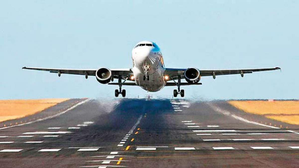New Delhi: The Directorate General of Civil Aviation (DGCA) has recently announced significant revisions to norms pertaining to the procedure for breath-analyser examination of personnel engaged in safety-sensitive roles within the aviation industry.
This move comes as part of ongoing efforts to bolster safety protocols amid the escalating air traffic and ground movements at airports nationwide.
According to DCGA, under the revised the Civil Aviation Requirements (CAR) Section-5, Series-F, Part-IV, several key amendments have been introduced to strengthen the efficacy of alcohol detection measures in critical aviation operations, including aircraft maintenance, air traffic control services, aerodrome operations, and ground handling services.
One of the primary updates involves the adoption of fuel cell technology-based breath-analyzer equipment, renowned for their enhanced accuracy, which will now exclusively conduct the breath-analyzer tests.
“This transition aims to ensure the reliability and precision of alcohol detection procedures across the board,” said a senior DGCA official.
Furthermore, the permissible Blood Alcohol (BA) Test percentage for employees involved in safety-sensitive duties has been substantially increased from 10 per cent to 25 per cent, underscoring the heightened scrutiny placed on personnel responsible for ensuring the safety and security of air travel.
In a bid to streamline operational guidelines and promote consistency, Section-5, Series-F, Part-IV has been harmonised with CAR Section-5, Series-F, Part-III concerning the procedure for conducting breath-analyzer tests.
“This alignment is poised to simplify compliance efforts and facilitate standardised practices across various sectors within the aviation industry,” said the official, adding that the revised CAR is slated to take effect three months from the date of its issuance, affording industry stakeholders ample time to adapt and augment existing infrastructure to accommodate the updated breath-analyzer testing protocols at diverse locations.
–IANS


Comments are closed.